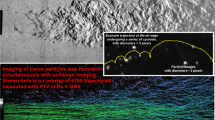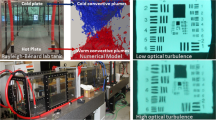Abstract.
Digital particle image velocimetry (DPIV) has been applied to animal-generated flows since 1993 to map the flow patterns and vortex wakes produced by a range of feeding and swimming aquatic animals, covering a Re range of 10–2–105. In this paper, the special circumstances, problems and some solutions on many aspects of PIV, which arise from working with living animals, are discussed and illustrated. Topics covered are the experimental set-up, animal housing, restraining animals, animal training, flow tanks, seeding, illumination, imaging, analysis accuracy and result interpretation. Examples include the feeding currents of different juvenile stages of copepods, filter feeding in acorn barnacles, filter feeding in cockles and soft-shelled clams, the wake of burst-swimming zebra danios, burrow ventilation in a mudshrimp and the vortex chain wake of a swimming mullet. DPIV appeared to be a powerful tool for studying animal-generated flows. However, PIV has to be applied with caution and often needs to be adapted to the particular circumstances to take into account the presence of animals and to ensure that the mapped flow phenomena arise from normal behaviour.
Similar content being viewed by others
Author information
Authors and Affiliations
Additional information
Electronic Publication
Rights and permissions
About this article
Cite this article
Stamhuis, .E., Videler, .J., van Duren, .L. et al. Applying digital particle image velocimetry to animal-generated flows: Traps, hurdles and cures in mapping steady and unsteady flows in Re regimes between 10–2 and 105 . Exp Fluids 33, 801–813 (2002). https://doi.org/10.1007/s00348-002-0520-x
Accepted:
Issue Date:
DOI: https://doi.org/10.1007/s00348-002-0520-x




